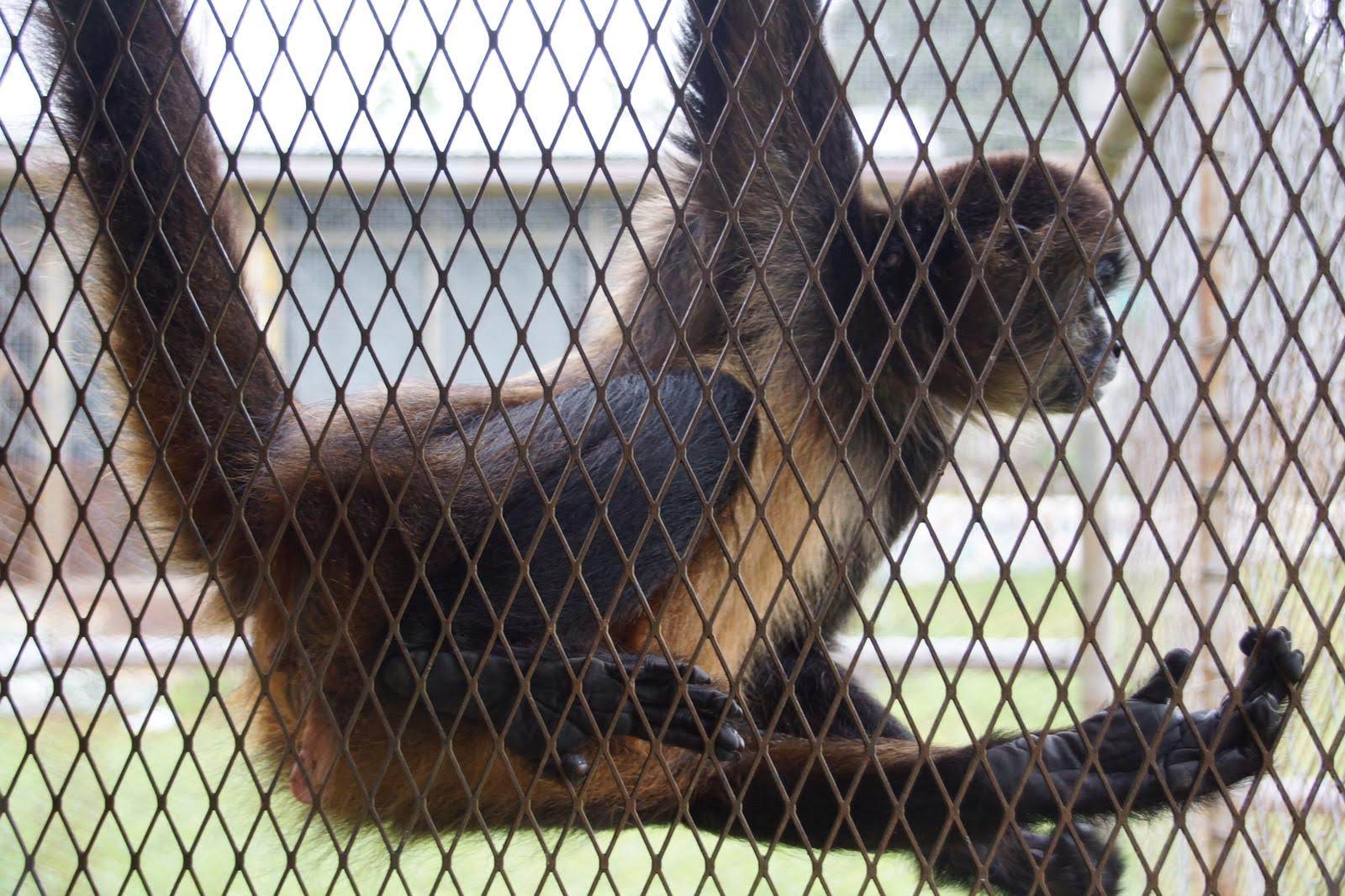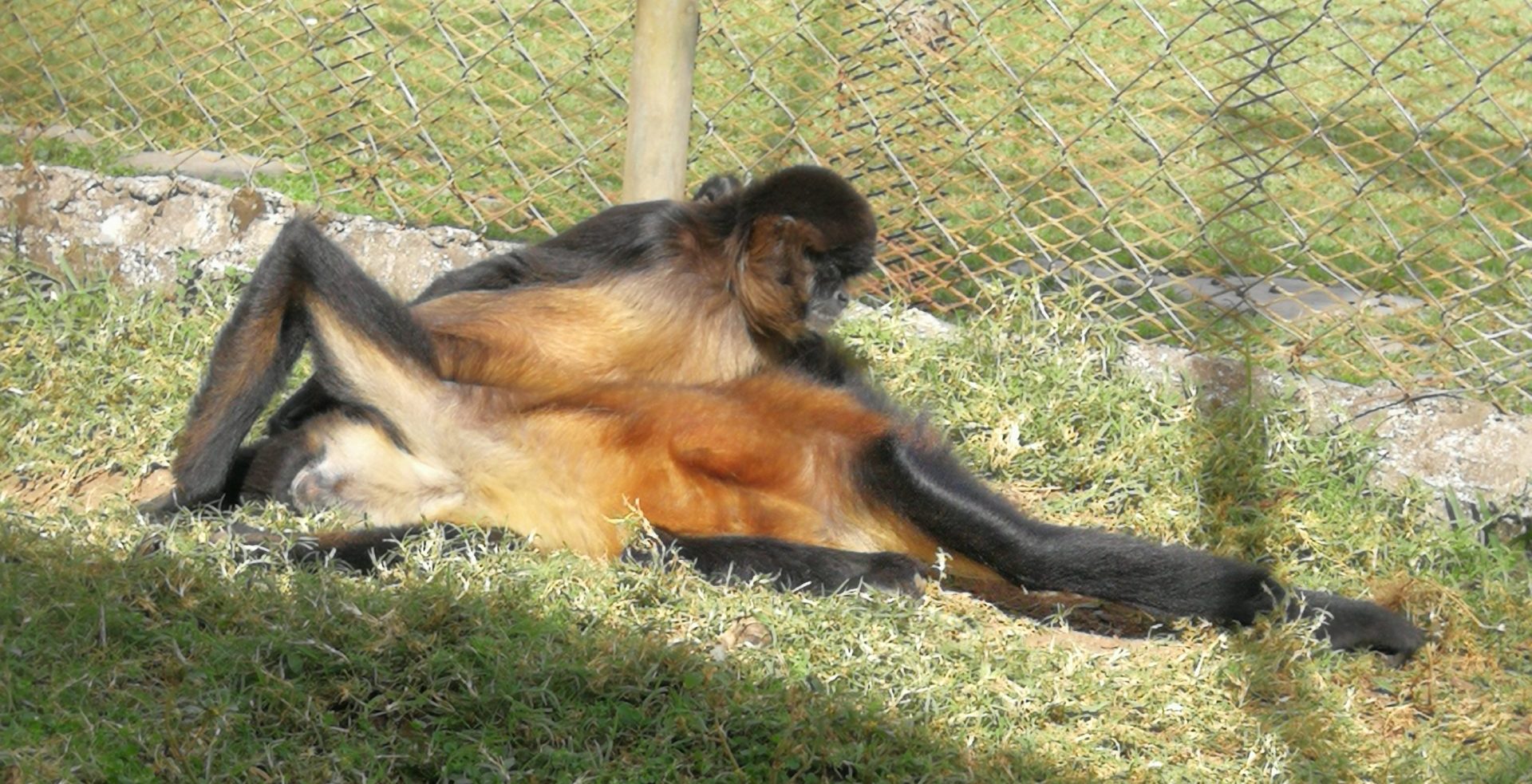Spider Monkey / Ateles geoffroyi
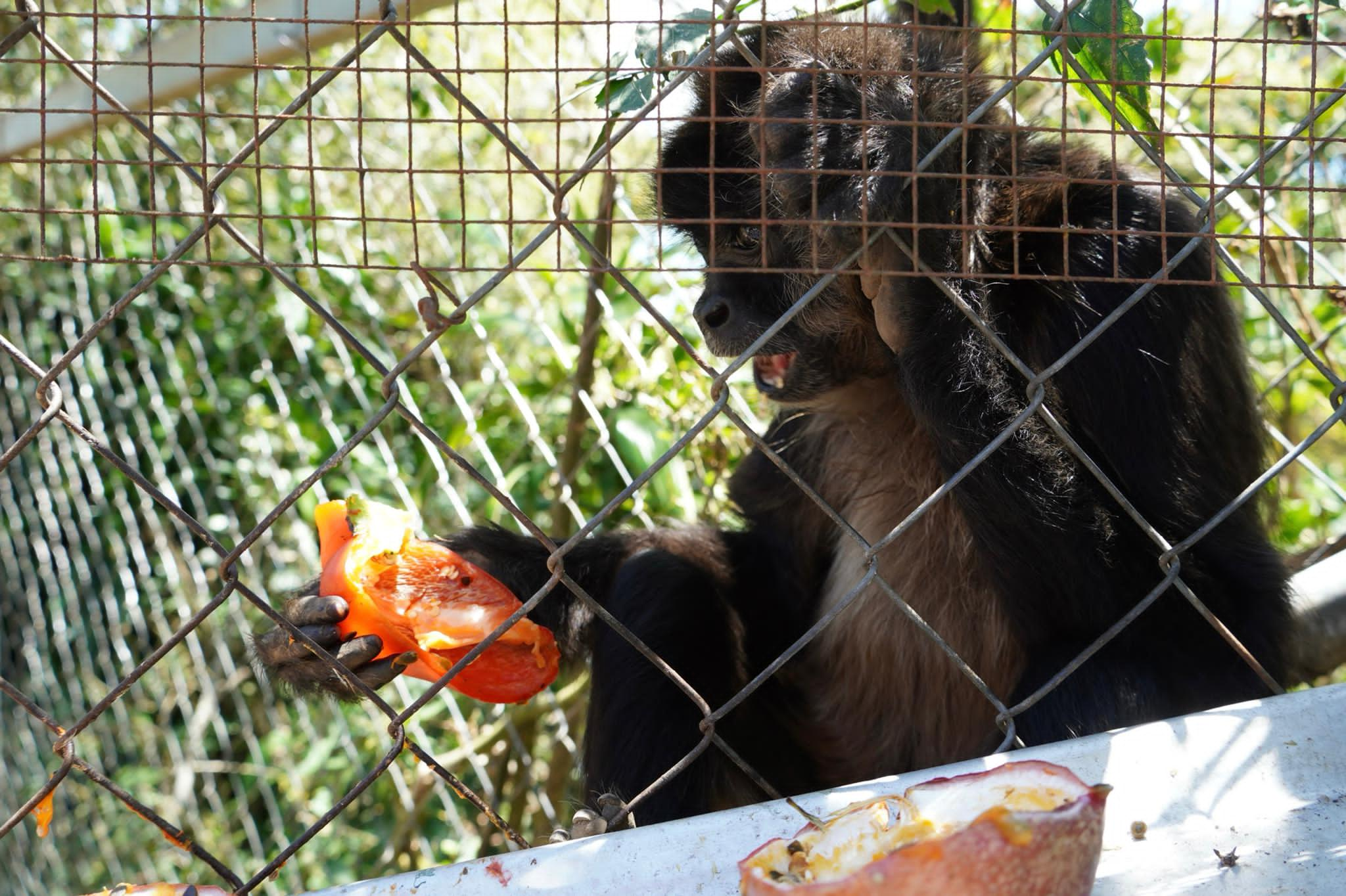
Diet
This primate feeds primarily on fruits—preferably ripe and fleshy—and they spend 70% to 80% of the time invested in feeding. The rest of the diet, for the most part, consists of leaves, especially young leaves that contain the proteins absent in fruits. The minority components of the diet are flowers, bark, insects, honey, seeds, and shoots.
In addition to providing most of the nutritional requirements, the fruits and leaves provide a good part of their water requirements.Like other species of spider monkeys, they can take water accumulated inside the leaves of bromeliads in trees, but unlike trees, they can descend to the ground in search of other sources of water.
Our Monkeys
Lupita
Lupita was rescued from another rescue center that had shut its doors, the woman who had her since she was a baby had a little girl that had just turned two, and the fear of her little girl going near Lupita and getting hurt, she decided to call us to see if we would be willing to take her in so we went and rescued her when we realised that she was the same as daisy who became good friends after spending time in habitats that where side by side.
she has been with us since 2015, she has had her oportunity to be released but since she was surounded by people since she was a baby she will not leave.
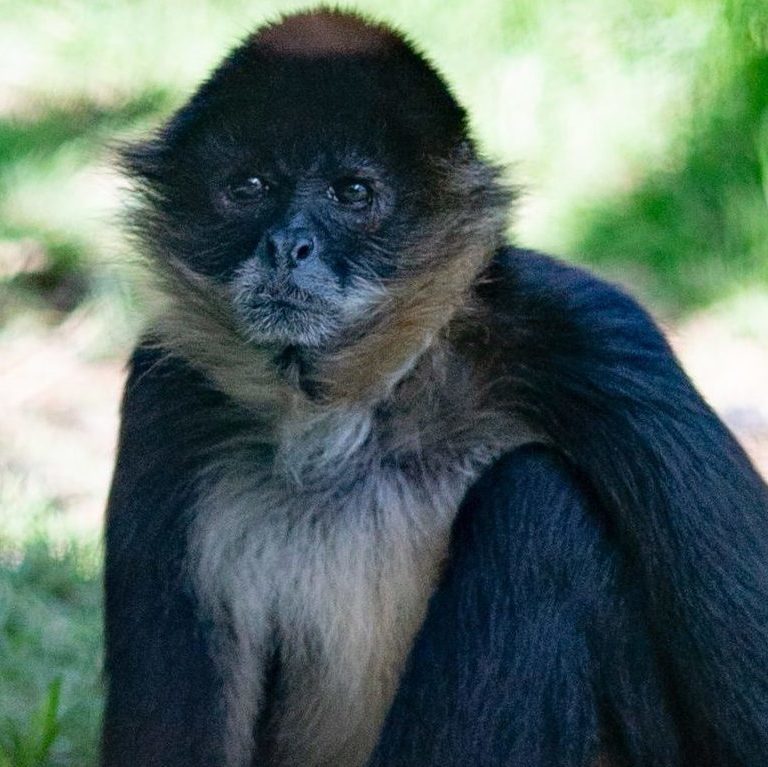
Daisy
Daisy was rescued from a house in Volcan she was abused, teased with food, and chained up, the chain was so heavy that she could bearly move on top of that had a tight plastic collar around her neck, she was chained to a concrete building and kids that would go by for school would throw rock at her.
she was rescude after she had turnt agresive and atacked the person who would hurt her.
it took us about 7 years to rehabilitate her since she would want to atack you and would have episode for hours.
she has been with us since 2010, now she has a friend and a safe space to be herself, she is very sweet and even will hold your hand.
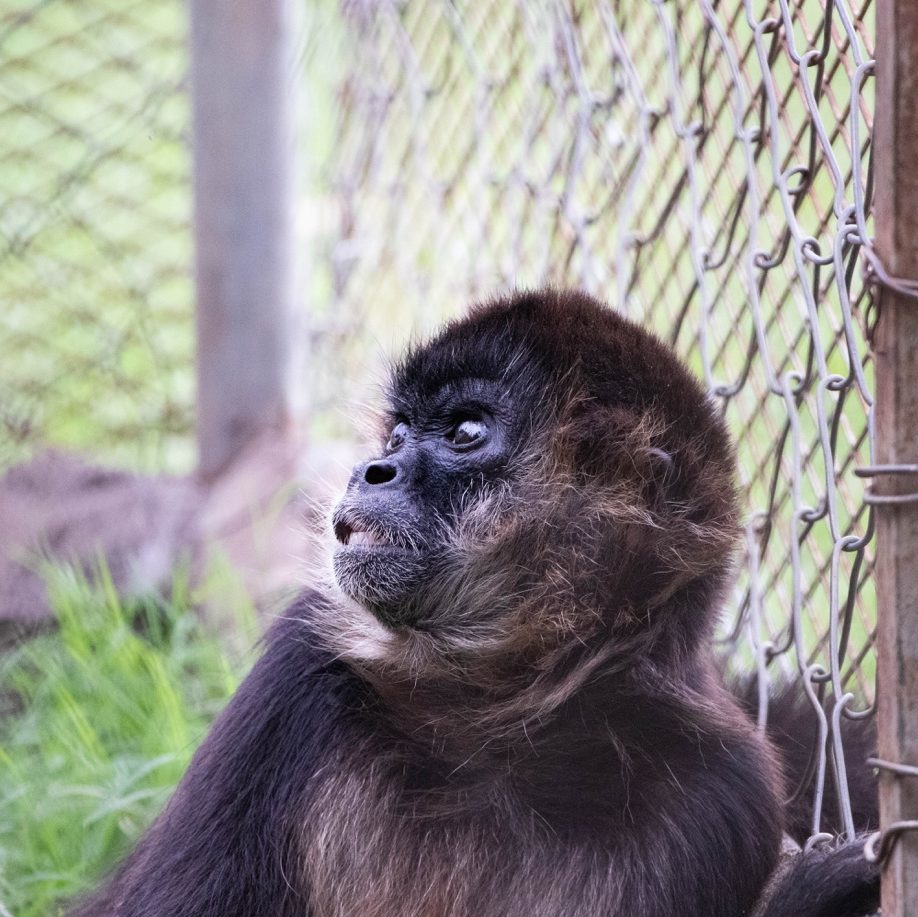
Click to learn more about what includes.
length
Geoffroy’s spider monkey is one of the largest New World monkeys. Its size, not including the tail, is large, ranging between 30 and 63 cm and its weight between 6 and 9 kg. The tail is longer than the body and measures between 63 and 85 cm. Males they are slightly larger than females.
Its body color varies among different subspecies and populations and ranges from reddish, brown, or black.The hands and feet tend to be darker than the rest of the body.The face often has a pale mask. around the eyes and muzzle.
Its arms and legs are long and slender. The arms are approximately 25% longer than the legs. Only a vestige of the thumb remains, but the remaining fingers are long and strong, giving the hand a hooked shape. These characteristics give it the quality of braquiar swinging between the branches of the trees.
The prehensile tail is strong and has a palm-shaped surface at the tip. The tail functions as an additional limb and is actively used in locomotion, gathering fruit and water from hollows in trees. It can suspend its entire body weight hanging from its tail and often adopts this posture while feeding.
